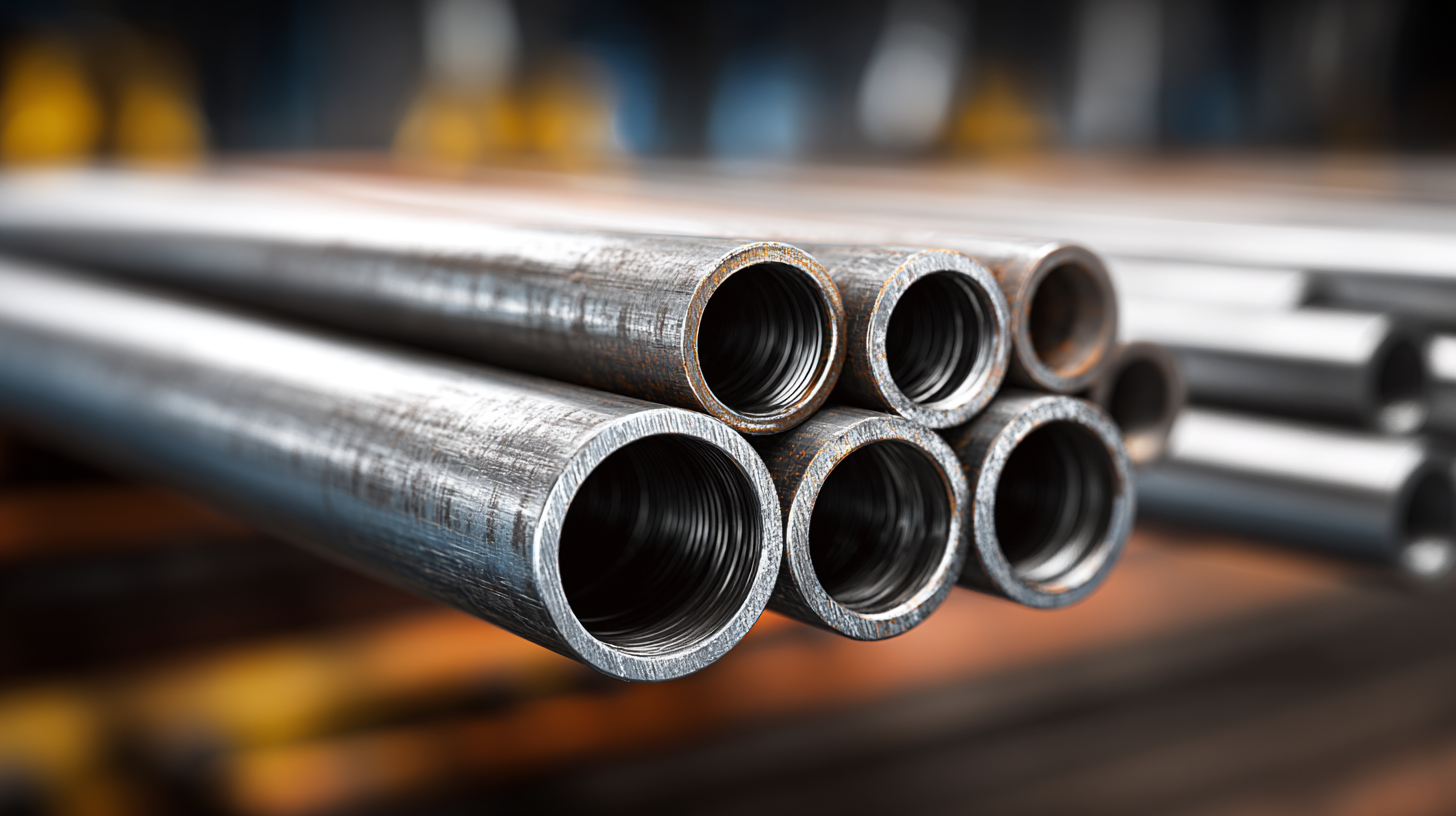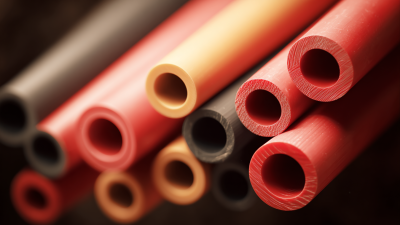Unlocking the Benefits of Custom Tubing: A Game Changer in Modern Engineering Solutions
In the ever-evolving landscape of modern engineering solutions, the significance of custom tubing has emerged as a transformative innovation that addresses the diverse needs of various industries. Custom tubing is not merely a functional component; it is a game changer that unlocks a multitude of benefits, from enhanced design flexibility to improved efficiency and performance. By tailoring tubing solutions to specific requirements, engineers can optimize systems for better flow dynamics, reduce material waste, and increase durability.

This article will explore the myriad advantages of custom tubing, offering practical tips and insights that highlight its critical role in advancing engineering practices. As we delve deeper, the focus will shift towards understanding how this customization not only elevates project outcomes but also fosters greater sustainability in engineering applications.
Understanding Custom Tubing: Key Features and Applications
Custom tubing has emerged as a pivotal component in various engineering applications, offering distinct benefits tailored to specific needs. With the rise in demand for precision and durability, companies are increasingly turning to custom tubing solutions. According to a recent report by Research and Markets, the global custom tubing market is expected to reach $10 billion by 2025, highlighting the significant role it plays across industries such as aerospace, automotive, and healthcare. Custom tubing can be designed for varying pressures, temperatures, and corrosion resistance, ensuring optimal performance in challenging environments.
When considering custom tubing, it's crucial to understand the key features that set it apart. Materials such as stainless steel, titanium, and polymers are commonly utilized, allowing for better adaptability to specific applications. For instance, in the medical field, custom tubing is often utilized in devices that require precise fluid delivery, where standard tubing may not suffice. Furthermore, innovations like 3D printing in custom tubing production have reduced lead times significantly, promoting rapid prototyping and enhancing efficiency.
Tips: When selecting custom tubing, always evaluate your specific application requirements such as pressure tolerance and material compatibility. Additionally, partnering with a manufacturer that provides comprehensive support can streamline the design process, ensuring you receive a solution that meets your precise specifications.
Unlocking the Benefits of Custom Tubing: A Game Changer in Modern Engineering Solutions
| Key Feature | Description | Applications | Material Options |
|---|---|---|---|
| Precision Engineering | Custom tubing allows for tight tolerances and optimized performance. | Aerospace, Automotive | Stainless Steel, Aluminum |
| Versatility | Custom tubing can be tailored to specific operational requirements. | Medical Devices, Industrial Equipment | Copper, PVC |
| Corrosion Resistance | Materials can be selected to withstand harsh environments. | Oil and Gas, Chemical Processing | Carbon Steel, Nickel Alloys |
| Custom Shapes | Ability to produce non-standard shapes for specialized applications. | Architecture, Furniture Design | Aluminum, Titanium |
Exploring the Manufacturing Process of Tailored Tubing Solutions
The manufacturing process of custom tubing solutions has undergone significant advancements, positioning it as a cornerstone in modern engineering. Tailored tubing is designed to meet the specific requirements of various industries, including aerospace, automotive, and medical. According to a report from Grand View Research, the custom tubing market is projected to reach $6.9 billion by 2025, driven by the increasing demand for precision-engineered components that enhance efficiency and performance.
To achieve high-quality tailored tubing, the manufacturing process typically involves several stages: material selection, shaping, and finishing. Manufacturers select materials based on the specific application, whether it be lightweight composites for aerospace or corrosion-resistant alloys for medical instruments. Advanced technologies such as CNC machining and 3D printing are pivotal in shaping these components, allowing for intricate designs that traditional methods cannot achieve. A study by MarketsandMarkets indicates that 3D printing in tube manufacturing could grow at a rate of 23% CAGR through 2024, signifying the impact of innovative techniques on custom solutions.
Moreover, quality control plays a critical role in custom tubing production. Utilizing non-destructive testing methods ensures that the tubing meets industry standards, thus minimizing the risk of failure in critical applications. The implementation of automated inspection systems can reduce production time by up to 30%, improving overall operational efficiency while maintaining stringent quality benchmarks. This intersection of technology and process refinement is fundamentally transforming the landscape of custom tubing, making it a game changer in engineering solutions.
Comparative Analysis: Custom Tubing vs. Standard Tubing Options
Custom tubing has emerged as a superior alternative to standard tubing options, fundamentally transforming engineering solutions across various industries. One significant advantage of custom tubing lies in its ability to meet specific project requirements, including precise dimensions, materials, and configurations. In contrast, standard tubing often comes with limitations that may not cater to unique applications, leading to inefficiencies and increased costs in the long run. Custom solutions ensure that performance meets expectations, reducing the need for modifications or additional components.
Furthermore, the durability and reliability of custom tubing are remarkable compared to standard options. Custom manufacturers often utilize advanced materials and state-of-the-art manufacturing techniques, resulting in tubing that can withstand extreme conditions, pressure, and corrosion. This added resilience not only extends the life cycle of installations but also minimizes maintenance needs. As industries strive for improved sustainability and efficiency, the choice between custom and standard tubing becomes increasingly critical, and many are finding that investing in custom solutions ultimately yields greater long-term benefits.

Identifying Industries That Benefit Most from Custom Tubing
Custom tubing presents a remarkable opportunity across various industries, particularly in biopharmaceuticals and oil and gas drilling. In the biopharmaceutical sector, the standardization of single-use designs can significantly enhance efficiency and sustainability. According to recent industry reports, streamlined processes can reduce operational costs by approximately 30%, facilitating faster production cycles while maintaining product quality. This shift towards custom tubing solutions allows for greater flexibility in manufacturing and assists companies in meeting stringent regulatory requirements.

The oil and gas industry is also witnessing transformative benefits from custom tubing. With the advent of advanced drilling technologies and automation, tailored tubing solutions ensure durability and performance in extreme environments. Reports indicate that automation alongside custom tubing can lead to a 25% increase in drilling efficiency, further emphasizing the importance of innovation in this field.
Tips: When considering custom tubing options, prioritize materials that meet industry standards to ensure compatibility and longevity. Regularly assess advancements in materials technology to stay ahead of potential challenges. Collaborating with experienced suppliers can help in selecting the right custom solutions tailored to your specific needs.
Future Trends in Custom Tubing for Engineering Innovations
As the engineering landscape evolves, custom tubing is proving to be a pivotal element in the development of advanced medical devices. According to recent reports, the global market for medical tubing is projected to reach $9.5 billion by 2025, fueled by an increasing demand for biocompatible materials and innovative designs. This shift underscores the dire need for tailored solutions that meet specific application requirements, reinforcing that off-the-shelf products are often insufficient for cutting-edge medical technologies.
Future trends in custom tubing indicate a strong focus on biocompatibility and safety enhancements. With innovations in materials science, manufacturers are now able to produce tubing that not only meets stringent regulatory standards but is also adaptable to various medical applications. Recent breakthroughs in this area have enabled the creation of tubing that boasts improved durability and flexibility, which is paramount for the success of medical devices. As the industry continues to prioritize innovation over the status quo, custom tubing will undoubtedly play a key role in shaping the future of engineering solutions, ensuring that medical device makers can deliver safer and more effective products to the market.
Custom Tubing Innovations in Engineering: 2023 Trends
This chart illustrates the various key trends in custom tubing for 2023, showcasing their relative importance in modern engineering solutions.



